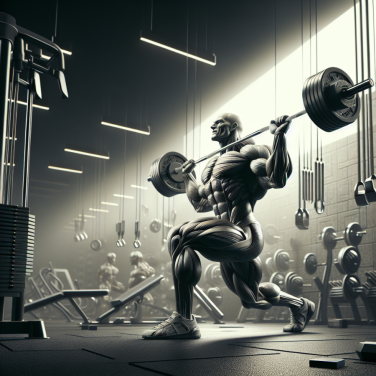Powerlifting Techniques: Unleashing Your True Strength Potential
Powerlifting techniques are fundamental to unlocking your true strength potential. Effective practice coupled with a solid understanding of these techniques can significantly improve your overall performance.
The first technique to consider is the proper form. Simply put, powerlifting is about lifting as much weight as possible for a single repetition in the squat, bench press and deadlift. However, it's always crucial to remember that sacrificing the correct form could lead to injury. In squats, for instance, keep your feet shoulder-width apart, your back straight, and always squat down until your hips are below your knees. For Bench press, lie flat on your posterior with your hands just outside of shoulder width and always keep your feet flat on the floor. And, in deadlift, it's all about lifting the weight off the ground until your hips and knees are locked in a straight position.
Next in line is the breathing technique. A lifter's strength can be substantially affected by small details, including how they breathe. Most powerlifters utilize the Valsalva Maneuver, a specific way to breathe that creates more intra-abdominal pressure and stability around the core. It involves taking a deep breath and holding it, then exerting the force while holding your breath. While it sounds simple, this technique requires practice to perfect.
Mastering the technique of progressive overload is another key to unlocking your true potential. This involves gradually increasing the amount of weight you lift over time, forcing your muscles to adapt and consistently become stronger. Without regular increases in weight or variations in lift techniques, your body will likely adapt to your current workout without making significant progress.
However, keep in mind that progressive overload doesn't only mean adding weight to the bars - it could also mean increasing the sets or reps, or even changing the exercises themselves. The trick is to keep challenging yourself, which is what will lead to effective and consistent gains.
In addition to the powerlifting techniques themselves, it's also essential to understand the influence of proper nutrition and recovery. A well-balanced diet filled with clean, whole foods will provide the body with the nutrients it needs to rebuild and to gain strength. It's also crucial to get plenty of rest between training sessions since it's during these recovery periods that the muscles repair and grow.
Consider adding accessory exercises to your training routine to improve weak areas. Accessory exercises refer to activities that improve your main lifts by either isolating the same muscle groups or using similar movement patterns.
Read also:
Understanding the Weight: A Comprehensive Guide to Golf Cart Dimensions
The Fundamentals of Powerlifting: Strategies for Enhanced Strength
Powerlifting is based on three fundamental exercises: the squat, the deadlift, and the bench press. These movements are the cores of powerlifting and are what sets it apart from other strength-focused sports. They are also the exercises that push our bodies, especially our muscles and central nervous system, to their limits. Understanding the tactics and strategies involved in each of these lifts is vital for any aspiring powerlifters or anyone trying to gain strength through powerlifting.
Firstly, the squat is often considered the king of powerlifting due to the sheer amount of muscles activated during the exercise. An effective strategy for enhancing strength in your squats involves breaking down the movement into its components. This may involve, to start with, practicing the movement without weight to ensure proper form. It's essential to have a deep understanding of the move and its mechanics before adding significant weight.
Another critical element to improving your squat and overall powerlifting strength is building your leg and core muscles. Including exercises such as front squats, lunges, and leg presses into your routine can target these muscles and significantly benefit your primary squat lifts.
The second fundamental exercise, the deadlift, is a true test of overall body strength. Building your strength in deadlifting involves a lot of posterior chain work—that is, strengthening the muscles on the backside of your body. Good mornings, hip thrusts, and romanian deadlifts are excellent exercises that strengthen the posterior chain.
When deadlifting, it's also important to remember the importance of grip strength. Improving your grip strength can be as simple as holding the bar on your last rep for as long as possible, not using lifting straps unless necessary, and incorporating grip-enhancing exercises into your lifting regimen.
The final cornerstone of powerlifting is the bench press. To enhance your strength when bench pressing, the focus should be on improving chest and tricep strength alongside engineering a solid technique. Just like the squat and deadlift, practicing the movement with lighter weights, focusing on form can be significantly beneficial.
Including secondary exercises such as dips, push-ups, and close-grip bench presses can also be instrumental to improve strength for your primary bench pressing. Also, remember that incremental progress is key in powerlifting. Slowly increasing your weights over time, known as progressive overload, will ensure that you continue to augment your strength.
One key overarching strategy that's crucial for powerlifting is the practice of periodization.




